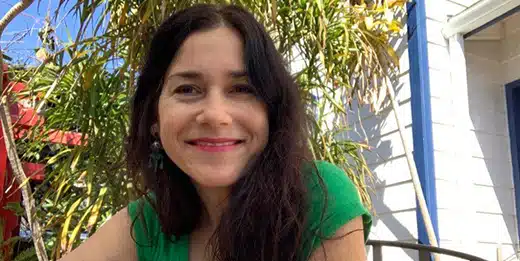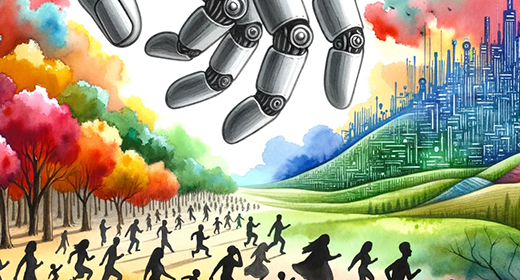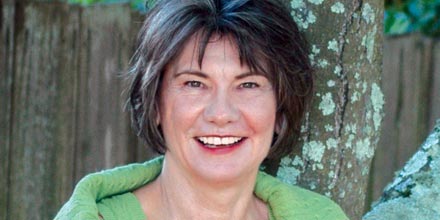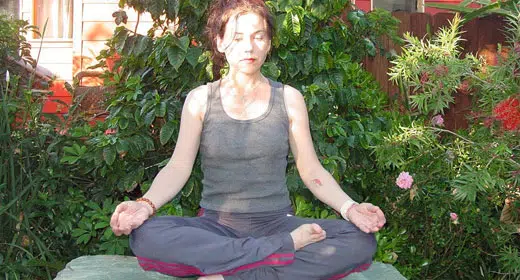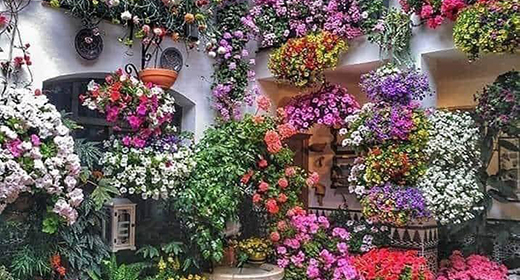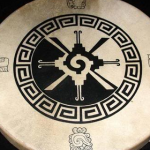by Thich Nhat Hanh: Thich Nhat Hanh explains that sangha is more than a community, it’s a deep spiritual practice…
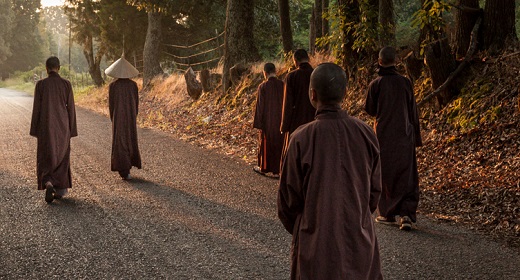
A sangha is a community of friends practicing the dharma together in order to bring about and to maintain awareness. The essence of a sangha is awareness, understanding, acceptance, harmony and love. When you do not see these in a community, it is not a true sangha, and you should have the courage to say so. But when you find these elements are present in a community, you know that you have the happiness and fortune of being in a real sangha.
In Matthew 5:13 in the New Testament of the Christian Bible, we find this statement: “Ye are the salt of the earth; but if the salt hath lost its savor, wherewith shall it be salted? It is thenceforth good for nothing but to be cast out and to be trodden underfoot of men.” In this passage, Jesus describes his followers as salt. Food needs salt in order to be tasty. Life needs understanding, compassion and harmony in order to be livable. This is the most important contribution to life that the followers of Jesus can bring to the world. It means that the Kingdom of Heaven has to be realized here, not somewhere else, and that Christians need to practice in a way that they are the salt of life and a true community of Christians.
Salt is also an important image in the Buddhist canon, and this Christian teaching is equivalent to the Buddha’s teaching about sangha. The Buddha said that the water in the four oceans has only one taste, the taste of salt, just as his teaching has only one taste, the taste of liberation. Therefore the elements of sangha are the taste of life, the taste of liberation, and we have to practice in order to become the salt. When we say, “I take refuge in the sangha,” it is not a statement, it is a practice.
The trees, water, air, birds, and so on can all be members of our sangha. A beautiful walking path may be part of our sangha. A good cushion can be also.
In the Buddhist scriptures it is said that there are four communities: monks, nuns, laymen and laywomen. But I also include elements that are not human in the sangha. The trees, water, air, birds, and so on can all be members of our sangha. A beautiful walking path may be part of our sangha. A good cushion can be also. We can make many things into supportive elements of our sangha. This idea is not entirely new; it can be found throughout the sutras and in the Abhidharma, too. A pebble, a leaf and a dahlia are mentioned in the Saddharmapundarika Sutra in this respect. It is said in the Pure Land Sutra that if you are mindful, then when the wind blows through the trees, you will hear the teaching of the Four Establishments of Mindfulness, the Eightfold Path, and so on. The whole cosmos is preaching the buddhadharma and practicing the buddhadharma. If you are attentive, you will get in touch with that sangha.
Sangha as our roots
I don’t think the Buddha wanted us to abandon our society, our culture or our roots in order to practice. The practice of Buddhism should help people go back to their families. It should help people re-enter society in order to rediscover and accept the good things that are there in their culture and to rebuild those that are not.
Our modern society creates so many young people without roots. They are uprooted from their families and their society; they wander around, not quite human beings, because they do not have roots. Quite a number of them come from broken families and feel rejected by society. They live on the margins, looking for a home, for something to belong to. They are like trees without roots. For these people, it’s very difficult to practice. A tree without roots cannot absorb anything; it cannot survive. Even if they practice intensively for ten years, it’s very hard for them to be transformed if they remain an island, if they cannot establish a link with other people.
The practice of Buddhism should help people re-enter society in order to rediscover and accept the good things that are there in their culture and to rebuild those that are not.
A community of practice, a sangha, can provide a second chance to a young person who comes from a broken family or is alienated from his or her society. If the community of practice is organized as a family with a friendly, warm atmosphere, young people can succeed in their practice.
Suffering (dukkha) is one of the biggest problems of our times. First we have to recognize this suffering and acknowledge it. Then we need to look deeply into its nature in order to find a way out. If we look into the present situation in ourselves and our society, we can see much suffering. We need to call it by its true names—loneliness, the feeling of being cut off, alienation, division, the disintegration of the family, the disintegration of society.
Our civilization, our culture, has been characterized by individualism. The individual wants to be free from the society, from the family. The individual does not think he or she needs to take refuge in the family or in the society, and thinks that he or she can be happy without a sangha. That is why we do not have solidity, we do not have harmony, we do not have the communication that we so need.
The practice is, therefore, to grow some roots. The sangha is not a place to hide in order to avoid your responsibilities. The sangha is a place to practice for the transformation and the healing of self and society. When you are strong, you can be there in order to help society. If your society is in trouble, if your family is broken, if your church is no longer capable of providing you with spiritual life, then you work to take refuge in the sangha so that you can restore your strength, your understanding, your compassion, your confidence. And then in turn you can use that strength, understanding and compassion to rebuild your family and society, to renew your church, to restore communication and harmony. This can only be done as a community—not as an individual, but as a sangha.
In order for us to develop some roots, we need the kind of environment that can help us become rooted. A sangha is not a community of practice in which each person is an island, unable to communicate with each other—this is not a true sangha. No healing or transformation will result from such a sangha. A true sangha should be like a family in which there is a spirit of brotherhood and sisterhood.
If we see a group of people living mindfully, capable of smiling, of loving, we gain confidence in our future.
There is a lot of suffering, yes, and we have to embrace all this suffering. But to get strong, we also need to touch the positive elements, and when we are strong, we can embrace the suffering in us and all around us. If we see a group of people living mindfully, capable of smiling, of loving, we gain confidence in our future. When we practice mindful breathing, smiling, resting, walking and working, then we become a positive element in society, and we will inspire confidence all around us. This is the way to avoid letting despair overwhelm us. It is also the way to help the younger generation so they do not lose hope. It is very important that we live our daily life in such a way that demonstrates that a future is possible.
We need a sangha
In my tradition we learn that as individuals we cannot do much. That is why taking refuge in the sangha, taking refuge in the community, is a very strong and important practice. When I say, “I take refuge in the sangha,” it does not mean that I want to express my devotion. No. It’s not a question of devotion; it’s a question of practice. Without being in a sangha, without being supported by a group of friends who are motivated by the same ideal and practice, we cannot go far.
If we do not have a supportive sangha, we may not be getting the kind of support we need for our practice, that we need to nourish our bodhichitta (the strong desire to cultivate love and understanding in ourselves). Sometimes we call it “beginner’s mind.” The mind of a beginner is always very beautiful, very strong. In a good and healthy sangha, there is encouragement for our beginner’s mind, for our bodhichitta. So the sangha is the soil and we are the seed. No matter how beautiful, how vigorous our seed is, if the soil does not provide us with vitality, our seed will die.
One of the brothers from Plum Village, Brother Phap Dung, went to Vietnam some years ago with a few members of the sangha. It was a very important experience for him. He had been in the West since he was a small child. Then when he went to northern Vietnam, he got in touch with some of the most ancient elements in Vietnamese culture and with the mountains and the rivers of northern Vietnam. He wrote to me and said, “Our land of Vietnam is so beautiful, it is as beautiful as a dream. I don’t dare take heavy steps on this earth of Vietnam.” By this he meant that he had right mindfulness when he walked. His right mindfulness was due to the practice and support he had in the sangha before he went to Vietnam. That is beginner’s mind, the mind you have in the beginning when you undertake the practice. It’s very beautiful and very precious, but that beginner’s mind can be broken, can be destroyed, can be lost if it is not nourished or supported by a sangha.
To practice right mindfulness we need the right environment, and that environment is our sangha.Although he had his little sangha near him in Vietnam, the environment was very distracting, and he saw that if he stayed too long without the larger sangha, he would be swept away by that environment, by his forgetfulness—not only his own forgetfulness, but the forgetfulness of everybody around him. This is because right mindfulness for someone who has only just started the practice is still weak, and the forgetfulness of the people around us is very great and capable of dragging us away in the direction of the five cravings.
To practice right mindfulness we need the right environment, and that environment is our sangha. Without a sangha we are very weak. In a society where everyone is rushing, everyone is being carried away by their habit energies, practice is very difficult. That is why the sangha is our salvation. The sangha where everyone is practicing mindful walking, mindful speaking, mindful eating seems to be the only chance for us to succeed in ending the vicious cycle.
And what is the sangha? The sangha is a community of people who agree with each other that if we do not practice right mindfulness, we will lose all the beautiful things in our soul and all around us. People in the sangha standing near us, practicing with us, support us so that we are not pulled away from the present moment. Whenever we find ourselves in a difficult situation, two or three friends in the sangha who are there for us, understanding and helping us, will get us through it. Even in our silent practice we help each other.
In my tradition they say that when a tiger leaves the mountain and goes to the lowland, it will be caught by humans and killed. When practitioners leave their sangha, they will abandon their practice after a few months. In order to continue our practice of transformation and healing, we need a sangha. With a sangha it’s much easier to practice, and that is why I always take refuge in my sangha.
How a sangha helps us
The presence of a sangha is a wonderful opportunity to allow the collective energy of the sangha to penetrate into our body and consciousness. We profit a lot from that collective energy. We can entrust ourselves to the sangha because the sangha is practicing, and the collective energy of mindfulness is strong. Although we can rely on the energy of mindfulness that is generated by our personal practice, sometimes it is not enough. But if you know how to use that energy of mindfulness in order to receive the collective energy of the sangha, you will have a powerful source of energy for your transformation and healing.
Your body, your consciousness, and your environment are like a garden. There may be a few trees and bushes that are dying, and you may feel overwhelmed by anguish and suffering at the sight of that. You may be unaware that there are still many trees in your garden that are solid, vigorous and beautiful. When members of your sangha come into your garden, they can help you see that you still have a lot of beautiful trees and that you can enjoy the things that have not gone wrong within your landscape. That is the role that the sangha can play. Many people in the sangha are capable of enjoying a beautiful sunset or a cup of tea. They dwell firmly in the present moment, not allowing worries or regrets to spoil the present moment. Sitting close to these people, walking close to these people, you can profit from their energy and restore your balance. When their energy of mindfulness is combined with yours, you will be able to touch beauty and happiness.
Nothing is more important than your peace and happiness in the here and now. One day you will lie like a dead body and no longer be able to touch the beauty of a flower. Make good use of your time; practice touching the positive aspects of life in you and around you.
Don’t lock yourself behind your door and fight alone. If you think that by yourself you cannot go back to embrace strong feelings, you can ask one, two or three friends to sit next to you and to help you with their support. They can give you mindfulness energy so that you can go back home with strength. They can say, “My brother, I know that the pain in you is very deep, and I am here for you.”
Taking refuge in the sangha is a very important practice. Abandoned, alone, you get lost, you get carried away. So taking refuge in the sangha is a very deep practice, especially for those of us who feel vulnerable, shaky, agitated and unstable. That is why you come to a practice center, to take refuge in the sangha. You allow the sangha to transport you like a boat so that you can cross the ocean of sorrow.
When you allow yourself to be in a sangha the way a drop of water allows itself to be in a river, the energy of the sangha can penetrate into you, and transformation and healing will become possible.
When we throw a rock into a river the rock will sink. But if we have a boat, the boat can carry hundreds of pounds of rocks and it will not sink. The same thing is true with our sorrow and pain. If we have a boat, we can carry our pain and sorrow, and we will not sink into the river of suffering. And what is that boat? That boat is, first of all, the energy of mindfulness that you generate by your practice. That boat is also the sangha—the community of practice consisting of brothers and sisters in the dharma.
We don’t have to bring just joy when we come to the sangha; we can also bring our suffering with us. But we have to walk on the path of joy with our suffering, we have to share joy with our brothers and sisters. Then we will be in touch with the seeds of happiness in ourselves, and the suffering will grow weaker and be transformed. Allow yourself to be supported, to be held by the sangha. When you allow yourself to be in a sangha the way a drop of water allows itself to be in a river, the energy of the sangha can penetrate into you, and transformation and healing will become possible.
Practice is easier with a sangha
The only way to support the Buddha, to support our sangha, to support the earth, to support our children and future generations, is to really be here for them. “Darling, I am here for you” is a statement of love. You need to be here. If you are not here, how can you love? That is why the practice of meditation is the practice of being here for the ones we love.
To be present sounds like an easy thing to do. For many of us, it is easy because we have made it a habit. We are in the habit of dwelling in the present moment, of touching the morning sunshine deeply, of drinking our morning tea deeply, of sitting and being present with the person we love. But for some of us it may not be so easy, because we have not cultivated the habit of being in the here and the now. We are always running, and it is hard for us to stop and be here in the present moment, to encounter life. For those of us who have not learned to be present, we need to be supported in that kind of learning. It’s not difficult when you are supported by the sangha. With sangha you will be able to learn the art of stopping.
The sangha is a wonderful home. Every time you go back to the sangha, you feel that you can breathe more easily, you can walk more mindfully, you can better enjoy the blue sky, the white clouds and the cypress tree in your yard. Why? Because the sangha members practice going home many times a day—through walking, breathing, cooking and doing their daily activities mindfully. Everyone in the sangha is practicing in the same way, walking mindfully, sitting mindfully, eating mindfully, smiling, enjoying each moment of life.
We are always running, and it is hard for us to stop and be here in the present moment, to encounter life. With sangha you will be able to learn the art of stopping.
When I practice walking I make mindful and beautiful steps. I do that not only for myself but also for all of my friends who are here; because everyone who sees me taking a step like that has confidence and is reminded to do the same. And when they make a step in the present moment, smiling and making peace with themselves, they inspire all of us. You breathe for me, I walk for you, we do things together, and this is practicing as a sangha. You don’t need to make much effort; your practice is easy, because you feel that you are supported by the sangha.
When we sit together as a sangha, we enjoy the collective energy of mindfulness, and each of us allows the mindful energy of the sangha to penetrate us. Even if you don’t do anything, if you just stop thinking and allow yourself to absorb the collective energy of the sangha, it’s very healing. Don’t struggle, don’t try to do something, just allow yourself to be with the sangha. Allow yourself to rest, and the energy of the sangha will help you, will carry and support you. The sangha is there to make the training easy. When we are surrounded by brothers and sisters doing exactly the same thing, it is easy to flow in the stream of the sangha.
As individuals we have problems, and we also have problems in our families, our societies and our nations. Meditation in the twenty-first century should become a collective practice; without a sangha we cannot achieve much. When we begin to focus our attention on the suffering on a larger scale, we begin to connect with and to relate to other people, who are also ourselves, and the little problems that we have within our individual circle will vanish. In this way our loneliness or our feeling of being cut off will no longer be there, and we will be able to do things together.
If we work on our problems alone, it becomes more difficult. When you have a strong emotion come up, you may feel that you cannot stand it. You may have a breakdown or want to die. But if you have someone, a good friend sitting with you, you feel much better. You feel supported and you have more strength in order to deal with your strong emotion. If you are taking something into your body that is toxic, even realizing that it will make you sick, you may not be able to change your habit. But if you are surrounded by people who do not have the same problem, it becomes easier to change. That is why it is very important to practice in the context of a sangha.
Because you feel supported there, the sangha is the most appropriate setting and environment for the practice of looking deeply. If you have a sangha of two, three, maybe even fifty people who are practicing correctly—getting joy, peace and happiness from the practice—then you are the luckiest person on earth.
We don’t have to force ourselves to practice. We can give up all the struggle and allow ourselves to be, to rest. For this, however, we need a little bit of training, and the sangha is there to make the training easy.
So practice in the setting of the sangha is much easier. We don’t have to practice so intensely. Our practice becomes the practice of “non-practice.” That means a lot. We don’t have to force ourselves to practice. We can give up all the struggle and allow ourselves to be, to rest. For this, however, we need a little bit of training, and the sangha is there to make the training easy. Being aware that we are in a sangha where people are happy with being mindful, where people are living deeply the moments of their days, that is enough. I always feel happy in the presence of a happy sangha. If you put yourself in such an environment, then transformation will happen without much effort. This is my experience.
Practicing in the sangha
If you are a beginner in the practice, you should not worry about what is the correct thing to do. When surrounded by many people, we might be caught by the idea, “I don’t know what is the right thing to do.” That idea may make us very uncomfortable. We may think, “I feel embarrassed that I’m not doing the right thing. There are people who are bowing, and I am not bowing. People are walking slowly, and I am walking a little bit too fast.” So the idea that we may not be doing the right thing can embarrass us.
I would like to tell you what is really the right thing. The right thing is to do whatever you are doing in mindfulness. Mindfulness is keeping one’s consciousness alive to the present reality. To bow may not be the right thing to do if you don’t bow in mindfulness. If you don’t bow but are mindful, not bowing is the right thing. Even if people are walking slowly and you run, you are doing the right thing if you run mindfully. The wrong thing is whatever you do without mindfulness. If we understand this, we will not be embarrassed anymore. Everything we do is right provided we do it in mindfulness. To bow or not to bow, that is not the question. The question is whether to bow in mindfulness or not, or not to bow in mindfulness or not.
If you take a step and you feel peaceful and happy, you know that is the correct practice. You are the only one who knows whether you are doing it correctly or not. No one else can judge. When you practice breathing in and out, if you feel peaceful, if you enjoy your in-breath and out-breath, you know you are doing it correctly. You are the best one to know. Have confidence in yourself. Wherever you find yourself, if you feel you are at ease and peaceful, that you are not under pressure, then you know you are doing it right.
The function of the bell in a sangha is to bring us back to ourselves. When we hear the bell we come back to ourselves and breathe, and at that point we improve the quality of the sangha energy. We know that our brother and our sister, wherever they are, will be stopping, breathing, and coming back to themselves. They will be generating the energy of right mindfulness, the sangha energy. When we look at each other, we feel confident, because everyone is practicing together in the same way and contributing to the quality of the sangha. So we are friends on the path of practice.
You don’t sit for yourself alone, you sit for the whole sangha—not only the sangha, but also for the people in your city, because when one person in the city is less angry, is smiling more, the whole city profits.
The sangha is made out of the work of individuals, so we have the duty to help create the energy of the sangha. Our presence, when it is a mindful presence, contributes to that energy. When we are absent during the activities of the sangha, we are not contributing to sangha energy. If we don’t go to a sitting meditation, we are not feeding our sangha. We are also letting ourselves go hungry, because we are not benefiting from the sangha.
We don’t profit from the sangha, and the sangha doesn’t profit from us. Don’t think that we sit for ourselves. You don’t sit for yourself alone, you sit for the whole sangha—not only the sangha, but also for the people in your city, because when one person in the city is less angry, is smiling more, the whole city profits. If we practice looking deeply, our understanding of interbeing will grow, and we will see that every smile, every step, every breath is for everybody. It is for our country, for the future, for our ancestors.
The best thing we can do is to transform ourselves into a positive element of the sangha. If members of the sangha see us practicing well, they will have confidence and do better. If there are two, three, four, five, six, seven of you like that in the sangha, I’m sure the sangha will be a happy sangha and will be the refuge of many people in the world.
The sangha isn’t perfect
Our transformation and healing depend on the quality of the sangha. If there are enough people smiling and happy in the sangha, the sangha has more power to heal and transform. So you have to invest in your sangha. Every member of the sangha has his or her weaknesses and strengths, and you have to recognize them in order to make good use of the positive elements for the sake of the whole sangha. You also have to recognize the negative elements so that you and the whole sangha can help embrace them. You don’t leave that negative element to the person alone, because he may not be able to hold and transform it by himself.
You don’t need a perfect sangha—a family or a community doesn’t have to be perfect in order to be helpful. In fact, the sangha at the time of the Buddha was not perfect. But it was enough for people to take refuge in, because in the sangha there were people who had enough compassion, solidity and insight to embrace others who did not have as much compassion, solidity and insight. I also have some difficulties with my sangha, but I’m very happy because everyone tries to practice in my sangha.
If we lived in a sangha where everyone was perfect, everyone was a bodhisattva or a buddha, that would be very difficult for us. Weakness in the other person is very important, and weakness within yourself is also very important. Anger is in us, jealousy is in us, arrogance is in us. These kinds of things are very human. It is thanks to the presence of weakness in you and weakness in a brother or a sister that you learn how to practice. To practice is to have an opportunity to transform. So it is through our shortcomings that we learn to practice.
There are some people who think of leaving the sangha when they encounter difficulties with other sangha members. They cannot bear little injustices inflicted on them because their hearts are small. To help your heart grow bigger and bigger, understanding and love are necessary. Your heart can grow as big as the cosmos; the growth of your heart is infinite. If your heart is like a big river, you can receive any amount of dirt. It will not affect you, and you can transform the dirt very easily.
The Buddha used this image. If you put a little dirt in a pitcher of water, then that water has to be thrown away. People cannot drink it. But if you put the same amount of dirt into a huge river, people can continue to drink from the river, because the river is so immense. Overnight that dirt will be transformed within the heart of the river. So if your heart is as big as a river, you can receive any amount of injustice and still live with happiness. You can transform overnight the injustices inflicted on you. If you still suffer, your heart is still not large enough. That is the teaching of forbearance and inclusiveness in Buddhism. You don’t practice to suppress your suffering; you practice in order for your heart to expand as big as a river.
One time the Buddha said to his disciples: “There are people among us who do not have the same capacity as we do. They do not have the capacity to act rightly or to speak rightly. But if we look deeply, we see in their hearts that there are good seeds, and therefore we have to treat those people in such a way that those good seeds will not be lost.”[1] Among us there are people who we may think do not have the capacity to practice as well as we do. But we should know that those people also have good seeds, and we have to cultivate those good seeds in such a way that these good seeds have a chance to be watered and to sprout.
We don’t need to be perfect. I myself am not perfect, and you don’t need to be perfect either.
The Buddha saw all his disciples as his children, and I think of mine in the same way. Any disciple of mine is my child that I have given birth to. In my heart I feel at ease, I feel light and happy, even though that child may still have a problem. You can use that method, too. If there is a person in the sangha who troubles you, don’t give up hope. Remember, “My teacher has given birth to that child. How can I practice in order to see that person as my sister? Then my heart will feel more at ease and I will be able to accept her. That person is still my sister, whether I want her to be or not.” That feeling and those words can help dissolve the irritation that you are having with that person.
If we have harmony in the sangha, we can give confidence to many people. We don’t need to be perfect. I myself am not perfect, and you don’t need to be perfect either. But if in your own way you can express your harmony in the sangha, this is your gift.
In the sangha there must be difficult people. These difficult people are a good thing for you—they will test your capacity of sangha-building and practicing. One day when that person says something that is not very nice to you, you’ll be able to smile and it won’t make you suffer at all. Your compassion will have been born and you will be capable of embracing him or her within your compassion and your understanding. Then you will know that your practice has grown. You should be delighted that such an act does not make you angry or sad anymore, that you have enough compassion and understanding to embrace it. That is why you should not be tempted to eliminate the elements that you think are difficult in your sangha.
I am speaking to you out of my experience. I now have a lot more patience and compassion, and because I have more patience and compassion, my happiness has grown much greater. You suffer because your understanding and compassion are not yet large enough to embrace difficult people, but with the practice you will grow, your heart will grow, your understanding and compassion will grow, and you won’t suffer anymore. And thanks to the sangha practicing together, thanks to your model of practice, those people will transform. That is a great success, much greater than in the case of people who are easy to get along with.
I take refuge in the sangha
The reason we take refuge in anything is because we need protection. But very often we take refuge in people or things that are not at all solid. We may feel that we are not strong enough to be on our own, so we are tempted to look for someone to take refuge in. We are inclined to think that if we have someone who is strong and can be our refuge, then our life will be easier. We need to be very careful, because if we take refuge in a person who has no stability at all, then the little bit of solidity we have ourselves will be entirely lost. Many people have done that and they have lost the little solidity and freedom they once had.
When a situation is dangerous, you need to escape, you need to take refuge in a place that is safe, that is solid. Earth is something we can take refuge in because it is solid. We can build houses on earth, but we cannot build on sand. The sangha is the same. Mindfulness, concentration and insight have built up sanghas and individuals that are solid, so when you take refuge in the sangha, you take refuge in the most solid elements.
When you are angry, if you know how to go back to your mindful breathing and take refuge in your mindfulness, you become strong. You can dwell peacefully in that moment and you are capable of dealing with the situation in a much more lucid way. You know that within you there are the elements of mindfulness, concentration and insight. Those seeds are always there. If you have a friend, a teacher, a sangha that can help you to touch those seeds and help them to grow, then you have the best kind of protection.
This is the role sangha plays in supporting, protecting and nourishing us. In the sangha there is stability and joy. The sangha is devoted to the practice of mindfulness, concentration and insight, and while everyone in the sangha profits from his or her own mindfulness, they can also take refuge in the collective energy of mindfulness, concentration and insight of the sangha. That is why there is a sense of solidity and security in the sangha. We are not afraid because the sangha is there to protect us.
It is like the flocks of wild geese that travel together from the north to the south in huge numbers. If one bird goes off on its own, it will be easily caught, but if they stay together, they are much safer. Near Plum Village there are hunters who use a bird cry to lure the geese down. If a wild goose leaves the flock and comes down alone, he will easily be shot by the hunters.
It’s the same with the sangha. If we think we can live alone, apart from the sangha, we don’t know our own strength or our own weakness. Thanks to the sangha we do not enter paths of darkness and suffering. Even when the sangha doesn’t seem to be doing anything at all, in fact it is doing a lot, because in the sangha there is protection.
Without the sangha we easily fall into the traps of the five cravings. Once in those traps, we will be burnt by the flames of the afflictions and suffering. Keeping the mindfulness trainings and taking refuge in the sangha’s protection is a very good way to avoid being caught in the traps of the five cravings. We keep the mindfulness trainings so that they protect us. The rest of the sangha will also be keeping the same mindfulness trainings and helping us.
Some people have told me that they have never felt secure before coming to a retreat. Then after sitting, eating and walking mindfully with the sangha, for the first time they get a feeling of security. Even small creatures living nearby feel safer, because we are mindful and do our best not to harm them. That feeling of security can lead to joy. We can practice like this:
Breathing in, I see that I am part of a sangha, and I am being protected by my sangha.
Breathing out, I feel joy.
The dharma can protect you—dharma not in the sense of a dharma talk or a book—but dharma as the practice embodied by people like yourself. When you practice mindful breathing, mindful walking, mindful listening to the bell, you bring into yourself the elements of peace and stability, and you are protected during that time. You begin to radiate the energy of stability and peace all around you. This will help to protect your children and your loved ones. Although you may not give a dharma talk with your words, you are giving a dharma talk with your body, with your in-breath, with your out-breath, with your life. That is the living dharma. We need that very much, just as we need the living sangha.

